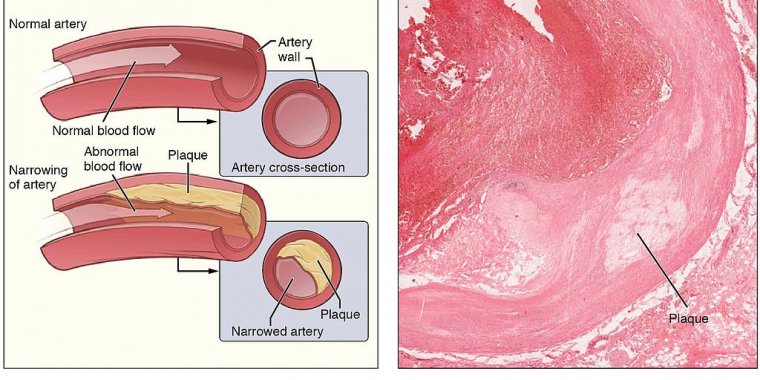| News / Science News |
Observation of blood vessel cells changing function could lead to early detection of blocked arteries
A study in mice has shown that it may be possible to detect the early signs of atherosclerosis, which leads to blocked arteries, by looking at how cells in our blood vessels change their function.
The muscle cells that line the blood vessels have long been known to multi-task. While their main function is pumping blood through the body, they are also involved in ‘patching up’ injuries in the blood vessels.
Overzealous switching of these cells from the ‘pumping’ to the ‘repair’ mode can lead to atherosclerosis, resulting in the formation of ‘plaques’ in the blood vessels that block the blood flow.
Atherosclerosis can lead to potentially serious cardiovascular diseases such as heart attack and stroke.
Although there are currently no treatments that reverse atherosclerosis, lifestyle interventions such as improved diet and increased exercise can reduce the risk of the condition worsening; early detection can minimise this risk.
Using state-of-the art genomics technologies, an interdisciplinary team of researchers based in Cambridge and London has caught a tiny number of vascular muscle cells in mouse blood vessels in the act of switching and described their molecular properties.
These cells in healthy tissues look similar to each other, they are actually quite a mixed bag at the molecular level. They lost the activity of typical muscle cell genes to various degrees, and instead expressed a gene called Sca1 that is best known to mark stem cells, the body’s ‘master cells’.
To confirm that these unusual cells originated from muscle cells, the team used another new technology, known as lineage labelling, which allowed the researchers to trace the history of a gene’s expression in each cell.
Researchers have confirmed that these cells become much more numerous in damaged blood vessels and in atherosclerotic plaques, as would be expected from switching cells.
Theoretically, seeing an increase in the numbers of switching cells in otherwise healthy vessels should raise an alarm. Likewise, knowing the molecular features of these cells may help selectively target them with specific drugs. (University of Cambridge)
YOU MAY ALSO LIKE





